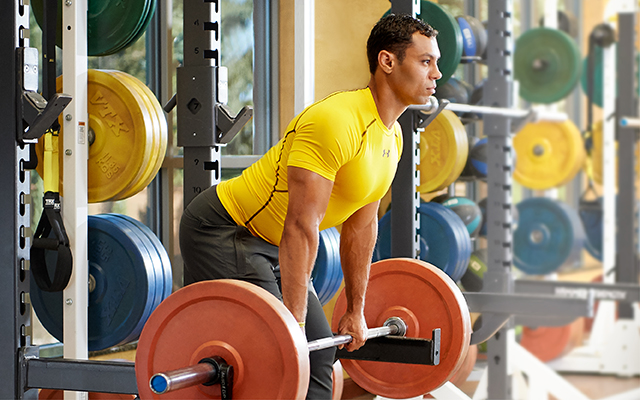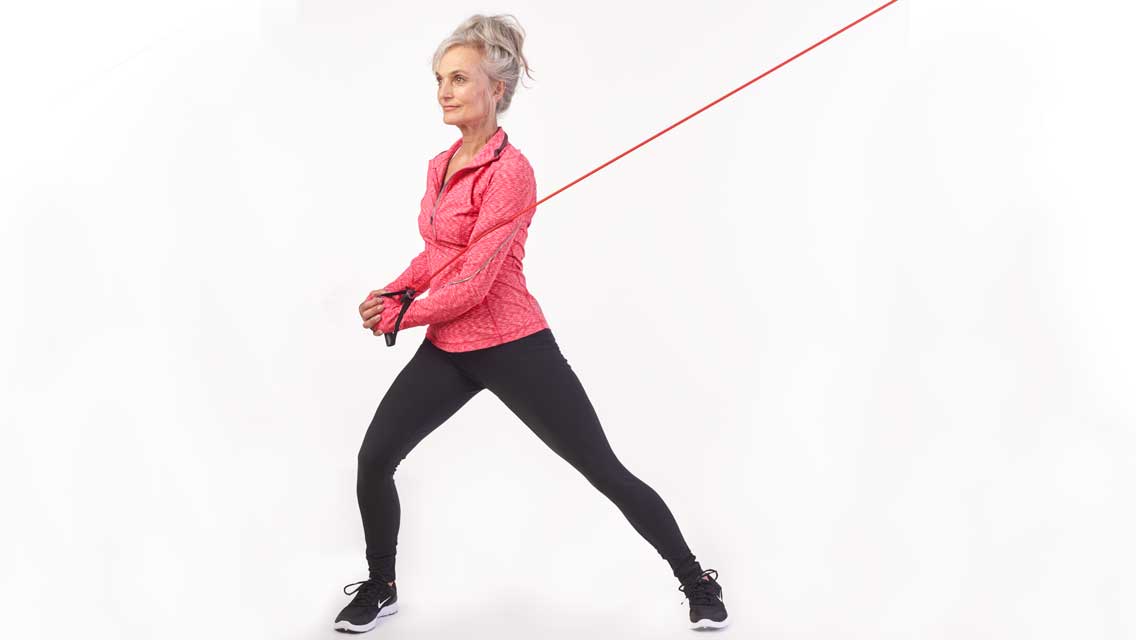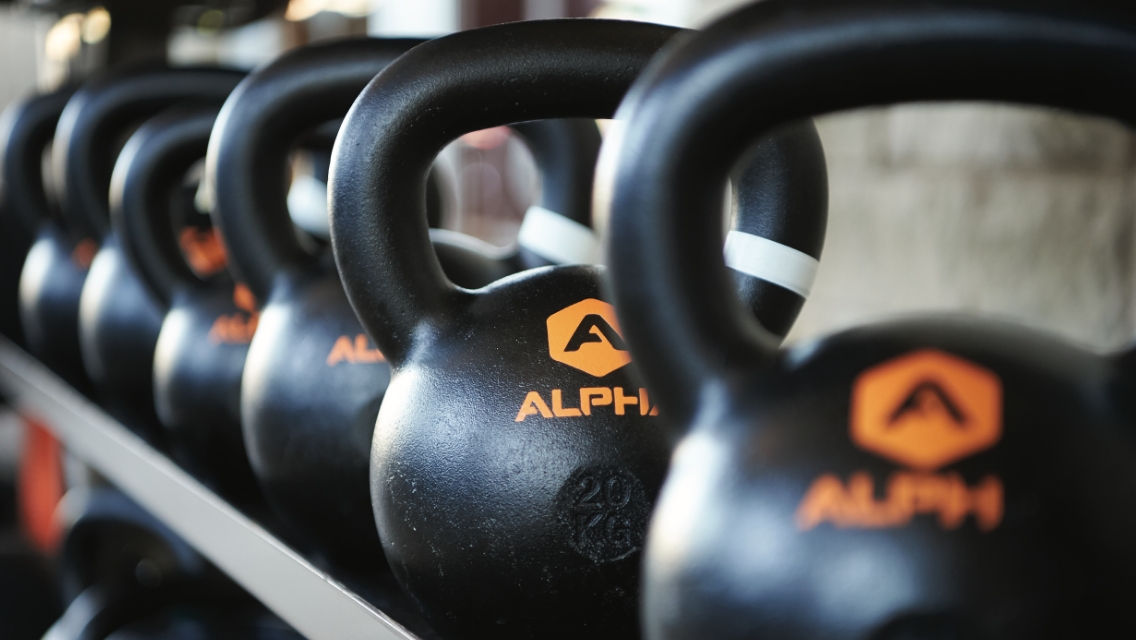What if getting strong could be easy? In a culture that tells you gain is forever associated with pain and you’re supposed to go home if you don’t go hard, that’s a pretty off-the-wall idea.
A few years ago, strength coaches Dan John, a champion discus thrower, and Pavel Tsatsouline, a former special-forces trainer, asked that question. The strength-training program they created shows that it is not only possible to get strong, but it might be the best way to do it. People who try the program — including John himself — reap the benefits of strength training and wind up stronger than ever.
“We all have this idea that it doesn’t count as exercise unless you end up a sweaty mess on the floor,” says John.
In fact, the hardest part of this eight-week, 40-workout Easy Strength program is not the workouts themselves; it’s getting past the belief that workouts have to be hard to be effective. “You won’t get pumped. You won’t get sweaty or sore,” says John. “What you do get, however, is strong.”
He acknowledges that this doesn’t look like a normal workout regimen — and that can be a stumbling block for many people.
“I wrote the book on this program. I made the best progress of my career on it, and yet I still struggle with it,” he says.
“It shouldn’t be this easy, but it is.”
The Plan
You’ll do the same strength-training workout — save for weight increases — five times a week, for eight weeks. Forty workouts in all. Each one will take you just 15 to 20 minutes to complete. Here’s a template of what each gym session will include, along with John’s suggested exercises.
1. Warm up. Spend five to 10 minutes on low-intensity cardio and calisthenics.
2. Perform each of the following movement types:
- Hinge. Hinge movements are initiated by bending at the hips to move weight.
- Press. Push something to arm’s length, either overhead or upward from your chest as you lie on your back.
- Pull. Pull something toward you from arm’s length.
3. Perform a power movement. Quickly and explosively contract your lower-body muscles (and possibly upper-body muscles as well) to jump or accelerate an object in your hand or hands.
4. Perform a core exercise, focusing on precise movement and proper bracing rather than speed.
| Movement Type | Suggested Exercise | Sets/Reps |
| Hinge | Rack Deadlift | 2 sets x 5 reps |
| Press | Incline Bench Press | 2 sets x 5 reps |
| Pull | Assisted Pull-Up | 2 sets x 5 reps |
| Power | Kettlebell Swing | 20 to 50 reps |
| Core | Ab Rollout | 1 set x 5 reps |
The Strength-Training Moves
Rack Deadlift
- Stand inside a power rack, and set the support bars so a barbell placed across them is at knee height. Stand on a weight plate, if necessary.
- Load the bar with a moderately heavy to heavy weight and stand with the bar in front of you.
- Hinge at the hips, bend your knees, and grasp the bar with an overhand, shoulder-width grip.
- Keeping your arms straight, your lower back in its natural arch, your chest up, and your head aligned with your spine, stand fully upright.
- With your lower back still in its natural arch, bend at the hips and knees, lowering the bar to the support bars. Repeat.
Incline Bench Press
- Place a barbell in the uprights of an incline-bench-press station, load it with a medium-heavy weight, and lie back on the bench.
- Keeping your feet flat on the floor, grip the bar evenly with hands wider than shoulder width. Press the bar off the uprights until your arms are straight but not locked out.
- Slowly lower the bar until it contacts your chest, pulling your shoulder blades together.
- Press the bar back to the starting position and pause. Repeat.
Note: Always use a spotter when lifting heavy weights.
Kettlebell Swing
- Stand with feet slightly wider than shoulder width and a kettlebell about 1 foot in front of you. Hinge at the hips to reach down and grasp the kettlebell with both hands.
- With core engaged and lower back flat, quickly snap or “hike” the kettlebell backward, high between your legs.
- Reverse the movement by forcefully driving your hips forward, straightening your legs and strongly contracting your glutes. The kettlebell will swing out in front of you. (Do not lift the weight with your arms.)
- Once the kettlebell reaches its apex — about shoulder level — engage your lats and core to push it back between your legs.
- Repeat until the set is complete, then “park” the kettlebell in front of you.
Assisted Pull-Up
- Hang an exercise band over a pull-up bar so it forms a single, long loop.
- Place one foot or a knee inside the loop, hold the bar with an overhand grip, and allow your arms to straighten.
- Pull your shoulder blades together and draw your elbows down until your chin clears the bar.
- Lower yourself with control until your arms are straight. Repeat.
Ab Rollout
- Kneeling on a pad, grasp the handles of an ab wheel, and position it with the wheel directly below your shoulders.
- Keeping your arms straight and bracing your core, slowly roll the wheel forward as far as possible, allowing your chest and hips to come as close to the floor as you can. Do not allow your back to arch.
- Slowly return to the starting position.
The Finer Points
- Choose your weight conservatively. The point of this program, says John, is not to work as hard as you can on each workout, but to come back the next day and do it all again, perhaps a little bit better. Choose a weight you can lift for the prescribed number of reps with some effort but minimal fatigue. You should never miss a rep on this program. You are far from lifting to failure.
- Advance slowly. When the weight you chose at the beginning of the program becomes truly easy — and not until then — increase it by 5 or 10 pounds.
- Stick to the moves you’ve selected. Unless a movement is causing you pain, don’t change it.
- Don’t rush. Rest for about two minutes between sets of each move.
- Vary the power work. You can do the 20 to 50 reps of the explosive move however you wish: in sets of five, 10, 15, 20 — or one long set, with excellent form.
- Go easy on the core work. Perform this single set with focus and excellent form, but don’t overdo it with extra weight, or by adding additional core work.
Movement Variations
| Hinge | Press | Pull | Power | Core |
| Deadlift(conventional, sumo, Jefferson)
Trap Bar Deadlift One-Arm Deadlift |
Barbell Bench Press
Dumbbell Floor Press Overhead Press Push Press |
Pull-Up
Inverted Row Face Pull Cable Row Lat Pull-Down |
Kettlebell Swing
Jump Squat Jumping Lunge Med-Ball Slam |
Ab Rollout
Russian Twist Side Bend Hanging Knee Raise |
This article originally appeared as “Strength Made Easy” in the January/February 2018 issue of Experience Life.





